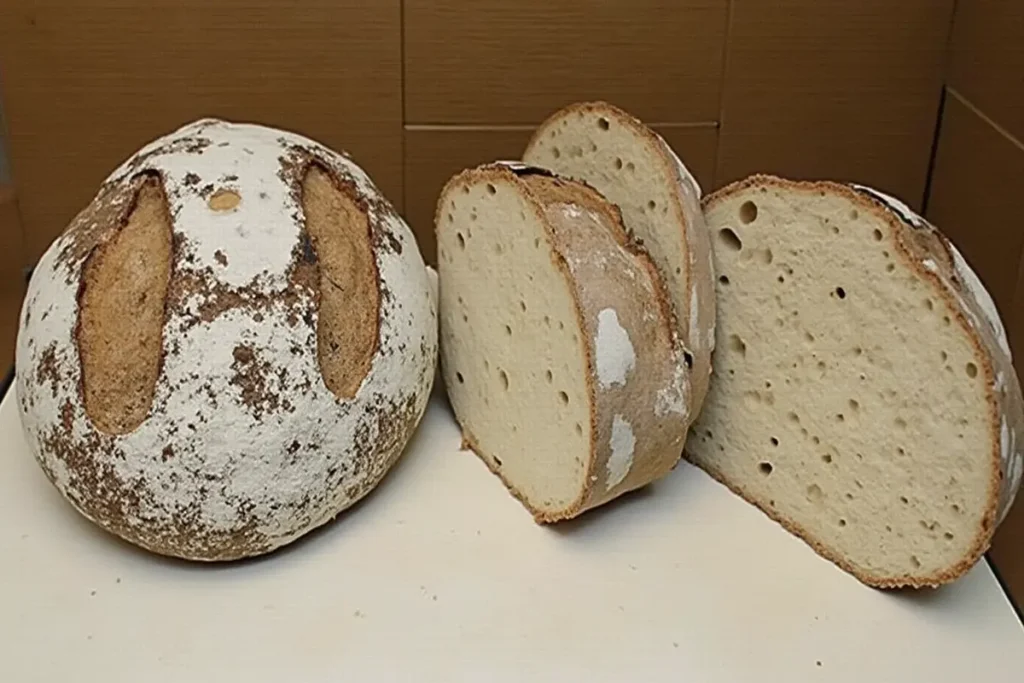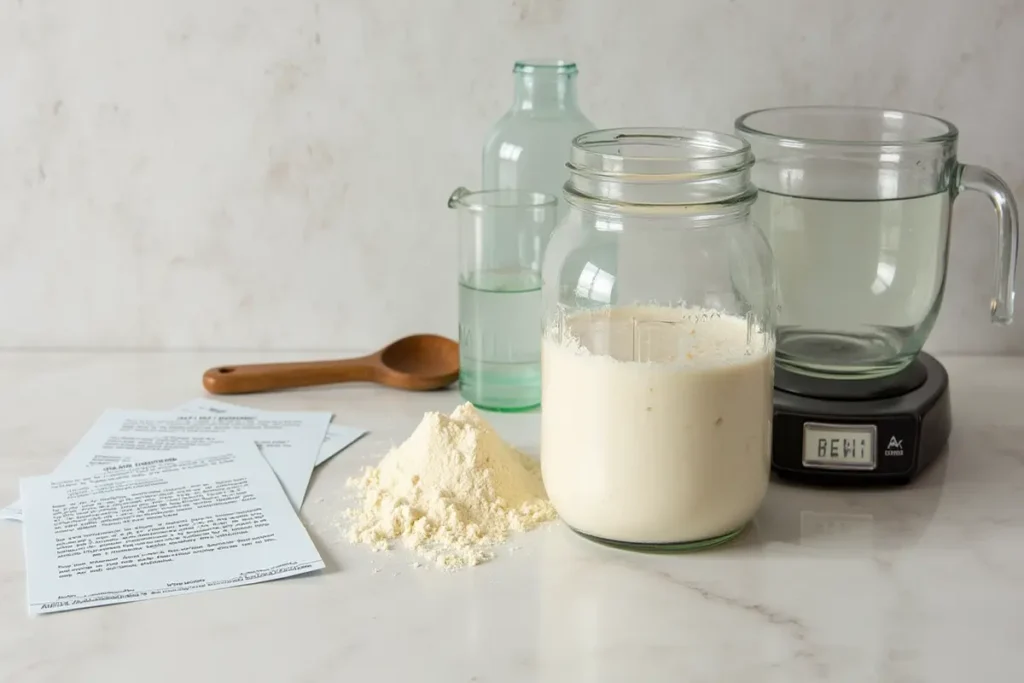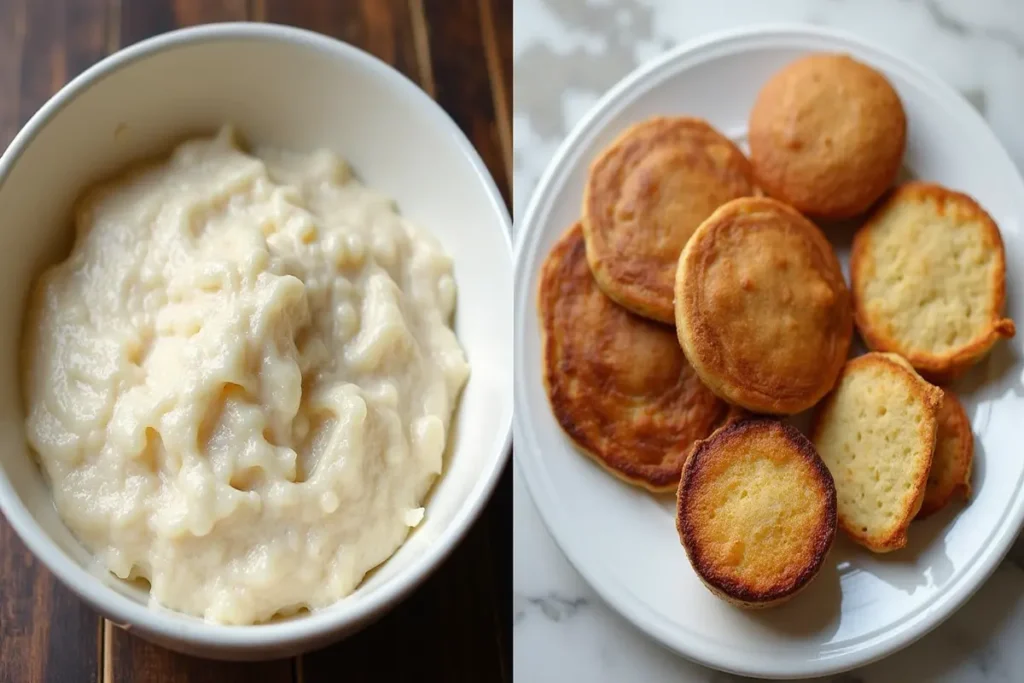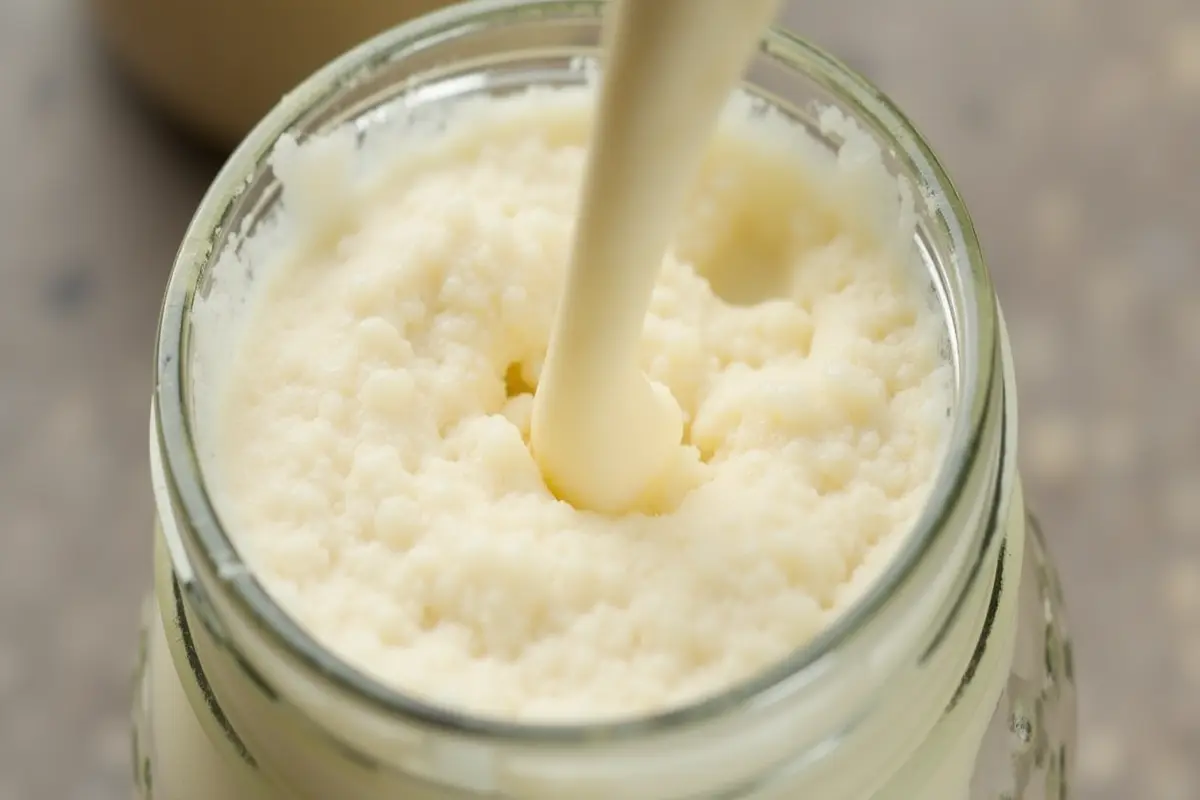Why discard sourdough starter? This article explores reasons for discarding, ensuring a healthy, thriving culture for baking success.
Understanding the Sourdough Starter Basics

A sourdough starter, a simple mix of flour and water, ferments with wild yeasts and bacteria. This fermentation process creates the tangy flavor characteristic of sourdough bread. However, maintaining a sourdough starter requires regular feeding and attention. Accordingly, understanding when and why must you discard sourdough starter is critical for its health. The discard is a necessary byproduct of feeding the culture.
What is Sourdough Starter Discard and Its Importance?
Generally, sourdough starter discard is simply the portion of starter removed before feeding. This action prevents the starter from becoming too large. Specifically, this process maintains the balance needed for healthy fermentation. Therefore, discarding is essential to a thriving starter.
Primary Reasons: Why Must You Discard Sourdough Starter Regularly
There are several reasons why must you discard sourdough starter regularly. Chiefly, it’s to manage the volume of the starter. Furthermore, discarding also plays a role in keeping the culture healthy. Moreover, understanding these reasons can help improve your sourdough baking process.
How Discarding Helps Prevent Starter Overflow
Basically, if you don’t discard, the starter will grow too big. This rapid growth can easily lead to overflows and messes. Therefore, discard reduces the volume. Indeed, regular discarding prevents this issue and keeps your kitchen clean. Additionally, managing the volume contributes to a more predictable and manageable baking routine.
Maintaining Consistent Starter Strength Through Discarding
Additionally, discarding is also crucial to maintaining starter strength. For example, if you continue to feed the starter without removing some, the ratio of fresh flour to fermented mixture becomes diluted. Consequently, this dilution weakens the overall activity of the culture. However, discarding some of the old starter before adding fresh flour ensures that the new feed has enough active yeasts and bacteria. Thus, this process keeps the yeast active and strong. Ultimately, it leads to better rising and flavor in your baked goods.
Acidity Control: A Key Reason Why Discarding Sourdough is Needed
Another crucial reason why must you discard sourdough starter relates to its acidity. Generally, a healthy starter should have a balanced level of acidity. However, over time, old starter produces excess acids. Hence, removing some of it helps maintain optimal pH. Thus, discarding promotes the proper environment for healthy fermentation. Specifically, balanced acidity ensures the characteristic tangy flavor of sourdough. Furthermore, this control over acidity is vital for consistent results.
Proper Techniques: How To Handle Sourdough Starter Discard

While discarding is necessary, it doesn’t mean that it’s wasteful. Furthermore, there are different methods to discard and many uses for the discard. Understanding this can change how you approach sourdough baking. Indeed, mastering discard techniques can make the sourdough process both efficient and enjoyable.
Timing is Everything: When Should You Discard Sourdough?
Initially, learn when to discard your starter. Specifically, discard should occur before you feed your starter. The culture will have exhausted most of the available food at this point, therefore, it’s ready for a fresh feed. This also prevents your starter from becoming too acidic. Generally, discarding before feeding leads to a consistent routine for a thriving culture. Furthermore, recognizing the signs of when to discard ensures optimal feeding results.
Effective Methods for Discarding Your Starter
Explicitly, discarding involves simply removing some of the starter before adding fresh flour. Equally, you can discard most of the starter. Just leave a small amount in your jar. This amount is the “seed” for the next feeding cycle. Afterward, you can pour the discard into the trash, or use it. However, the method you use should align with your baking schedule. Therefore, choosing the right approach can make your sourdough maintenance more efficient.
Maximizing Use: Creative Ways to Use Sourdough Discard
Conversely, you don’t have to just throw away your sourdough discard. Especially, there are numerous recipes that use the discard. For example, sourdough pancakes, crackers, and even cakes can be made from it. Moreover, using discard prevents food waste. Thus, it makes your sourdough routine sustainable and more enjoyable. Indeed, exploring discard recipes is a great way to enhance your baking skills. Additionally, it diversifies your baking repertoire.
Addressing Common Concerns About Sourdough Discard
Undoubtedly, sourdough baking can sometimes seem daunting. However, many concerns can be addressed with a better understanding. Let’s delve into the common concerns and their solutions. Basically, clarifying these questions helps build confidence in sourdough baking. Ultimately, it makes the process more approachable for everyone.
Is Skipping Discard Ever Acceptable?
Generally, skipping the discard occasionally won’t drastically harm the starter. Nevertheless, it’s not a good practice to skip discarding regularly. Specifically, skipping it frequently can lead to an overly acidic and weak starter. Therefore, it’s recommended to discard at least most feedings. Ultimately, following a regular feeding and discarding schedule ensures a healthy and active starter. Furthermore, consistency is key to a thriving sourdough culture.
Handling the Mishaps: Forgetting to Discard Sourdough
If you happen to forget to discard your starter, don’t worry. Indeed, it’s not the end of the world. Basically, just discard most of it when you next feed it. Then, continue feeding it as usual. Meanwhile, observe the starter in the next feeding cycle to determine if there is any damage. However, monitoring the starter’s behavior can help you make adjustments. Therefore, being observant is critical to maintaining a healthy starter.
Does Discarding Impact Sourdough Flavor?
While discarding removes some of the mature starter, it actually helps to enhance the flavor in the long run. Particularly, it controls the acidity. This ultimately promotes a more balanced flavor profile in your sourdough bread. Thus, discard is key for flavorful loaves. Indeed, understanding this connection helps you appreciate the importance of discarding. Additionally, it showcases how each step in sourdough impacts the final product.
Advanced Strategies for Optimal Sourdough Starter Health
Furthermore, for those looking to refine their sourdough skills, there are advanced techniques to consider. These techniques focus on optimizing the starter’s health. Therefore, exploring these methods can elevate your sourdough baking to a new level.
Using the Levain Method for Enhanced Sourdough Baking
Firstly, the levain method uses a portion of a healthy mature starter to create a separate culture. Specifically, this levain is used for baking. This method allows for greater control over the fermentation process. Also, using a levain can result in a more predictable dough rise. Therefore, this is a great technique for more complex sourdough recipes.
Cold Retarding Discard for Flavor and Efficiency
Comparatively, cold retarding the discard can provide additional benefits. Basically, refrigerating the discard can slow down its fermentation. This method allows you to accumulate discard for later use. Furthermore, it can also enhance the flavor of the discard over time. Thus, this is a great way to manage discard and extend its use.
Adjusting Starter Hydration for Desired Results
Another technique involves adjusting the hydration levels of the starter. Specifically, maintaining a higher hydration can promote a more active starter. Conversely, a lower hydration level can create a tangier starter. Indeed, experimenting with hydration can significantly change the final product. Therefore, finding the right balance can optimize your sourdough baking results.
Troubleshooting Common Sourdough Starter Issues
Moreover, while sourdough baking can be rewarding, it can sometimes present challenges. Addressing these issues promptly can save your starter. Consequently, understanding common problems and their solutions is essential. Hence, being prepared will ensure that you can handle most problems with ease.
Reviving an Inactive Sourdough Starter
Often, an inactive starter is a common problem. Generally, it could be due to improper feeding ratios or temperature fluctuations. Therefore, ensure consistent feedings. Additionally, keeping the starter at a stable temperature is essential. Thus, adjusting these factors can help restore activity.
Reducing Excessively Sour Sourdough Starter
Conversely, an overly sour starter may be the result of infrequent feedings. It can also be caused by the starter being too cold. However, more frequent feedings and warmer temperatures will help reduce the sourness. Specifically, finding the right balance is key to controlling its acidity.
Recognizing and Addressing Mold Contamination
If you spot mold, it’s important to discard the starter entirely. Indeed, mold cannot be resolved with regular feedings. Instead, it requires a complete restart with a new culture. Thus, ensuring a mold-free environment is essential.
Knowing When to Discard Your Sourdough Starter Entirely

Although discarding a portion of the starter is necessary, sometimes you may need to throw away the entire starter and begin a new one. Specifically, if your starter develops harmful mold or does not react well to regular feeding. Therefore, understanding these signs is crucial for success.
Recognizing the Signs of a Harmful Sourdough Starter
First, look for pink or orange streaks. Secondly, look for dark, fuzzy mold in your starter. These are signs that harmful bacteria are present. Additionally, these conditions cannot be resolved, and the whole starter should be thrown away. Furthermore, a foul smell, like that of nail polish remover or rotten cheese, is also a signal that the starter is not safe to use. Unquestionably, a bad smell can often mean that the starter is not healthy.
Understanding When a Starter Stops Rising
Comparatively, if your starter has stopped rising after feeding and isn’t doubling after a week, it’s another signal. Also, if it doesn’t show bubbles, it is also a sign. This could indicate that the yeast is inactive or that the bacteria in the starter are imbalanced. Hence, after a week, the starter should be discarded.
Accepting the Need for a Fresh Start
If you need to discard the entire starter, it’s not something to fear. Conversely, a new starter can be made with just flour and water. Eventually, you can repeat the process from the beginning to create a new starter. This is part of the sourdough baking process. Therefore, sometimes starting fresh is the only option. Nevertheless, having this knowledge can make you feel more in control.
Why Must You Discard Sourdough Starter In Conclusion
Altogether, understanding why must you discard sourdough starter is key to sourdough baking. Ultimately, discarding isn’t wasteful; it’s a fundamental part of the process. Basically, it maintains your starter’s health. Moreover, it helps you avoid overflow. Finally, it promotes the best flavor and results. Specifically, this practice ensures consistent and delicious sourdough bread every time. Nevertheless, sourdough baking involves a little bit of understanding. Therefore, don’t be afraid to experiment and find what works best for you. Indeed, it is an ongoing learning experience.
Frequently Asked Questions (FAQs):
What happens if you don’t discard sourdough starter?
If you don’t discard your sourdough starter, it can become too large, dilute the yeast and bacteria with each feeding and also overly acidic. Discarding before feeding ensures proper balance.
When should you discard sourdough starter?
You should discard your sourdough starter before each feeding. This is usually when the starter is at its peak or just starting to fall. It should have bubbles and rise noticeably.
Can you use sourdough starter discard?
Yes, sourdough starter discard can be used in various recipes. These include pancakes, crackers, cakes, and more. This helps reduce food waste.
What does a bad sourdough starter look like?
A bad sourdough starter may have pink or orange streaks, dark and fuzzy mold. It may also have a foul odor resembling nail polish remover or rotten cheese, and should be discarded.
FOR MORE RECIPES

